
Krishnapuram Palace in Kayamkulam.
This palace embodies building practices highly adapted for the climate. The roof overhang keeps out the sun’s great heat. Horizontal louvres beneath the eaves allow in light and breezes, keeping the interior comfortable. Four interior courtyards provide light and air for adjacent rooms.
The polished gypsum-based floors in some areas provide a surface that is ideal for walking comfortably with bare feet. Elsewhere, കയർ (coir) mats cover wooden floors, also pleasant to walk on. Thick interior masonry walls provide a solid feeling.
The sloping roof that leads down to the water in the palace pond, or kulam, covers the steps that allowed the royal family secluded access to the water for bathing.
The roof is covered with ceramic roof tiles. The roof tiles are a relatively modern addition. One guide told me that until a couple of centuries ago, builders thatched palace roofs with palm leaves.
People still use thatch for roofing on other buildings, or as a heat barrier on top of modern roofing materials.
The Malayalam name for Krishnapuram Palace is കൃഷ്ണപുരം കൊട്ടാരം (Krishnapuram Kottaaram).

This handrail at Krishnapuram Palace terminates in a peacock head.
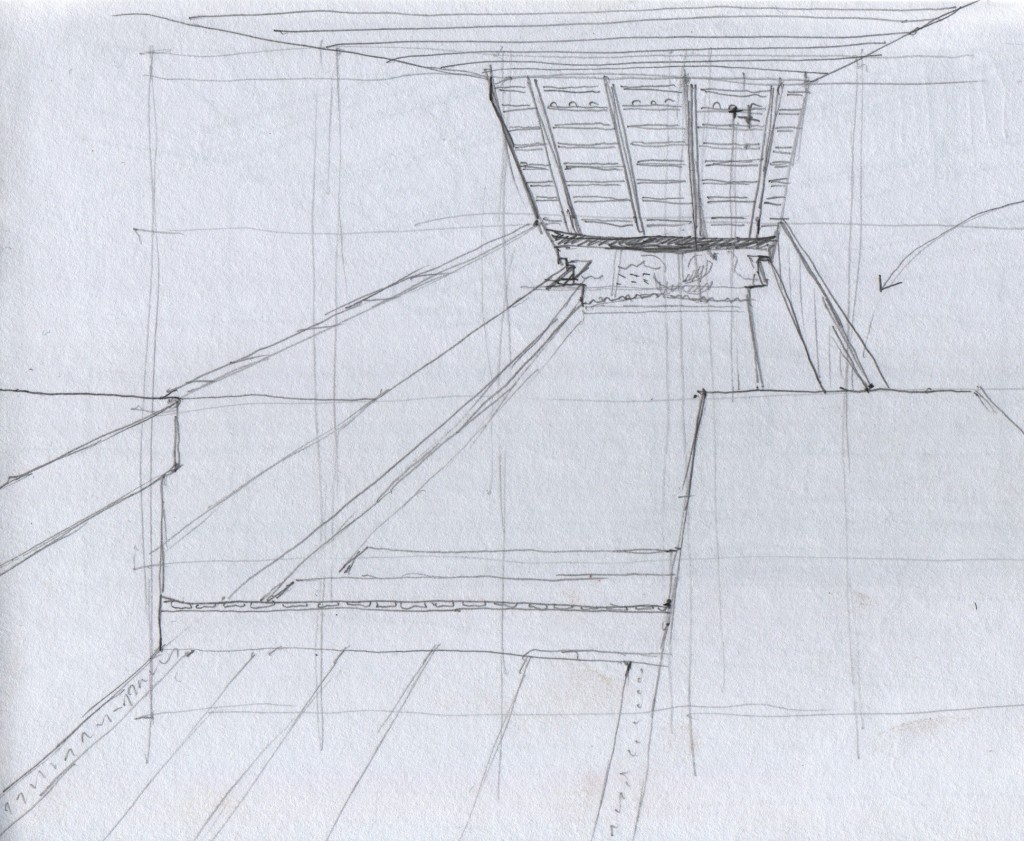
Here is an interior view of the covered bathing area that allowed the royal family to bathe unobserved in the kulam, or palace pond.
The opening shows the water reflecting the trees on the opposite shore upside down against the sky.
Daylight filtered in underwater from the far end, suffusing the interior with gentle, emerald-green light from below.
Small fish swam about.

One of the courtyards at Krishnapuram Palace.
The roof extends low into the courtyard, and a person entering has to duck slightly to get past. In some cases, one must walk through the courtyards when going from one room to the next, and this provides pleasant variety in transitions when moving about in the palace.
During the sunny season, the courtyard provides both shade and intense light.
During the rainy season, water collects in the central basin and drains away out of the palace.
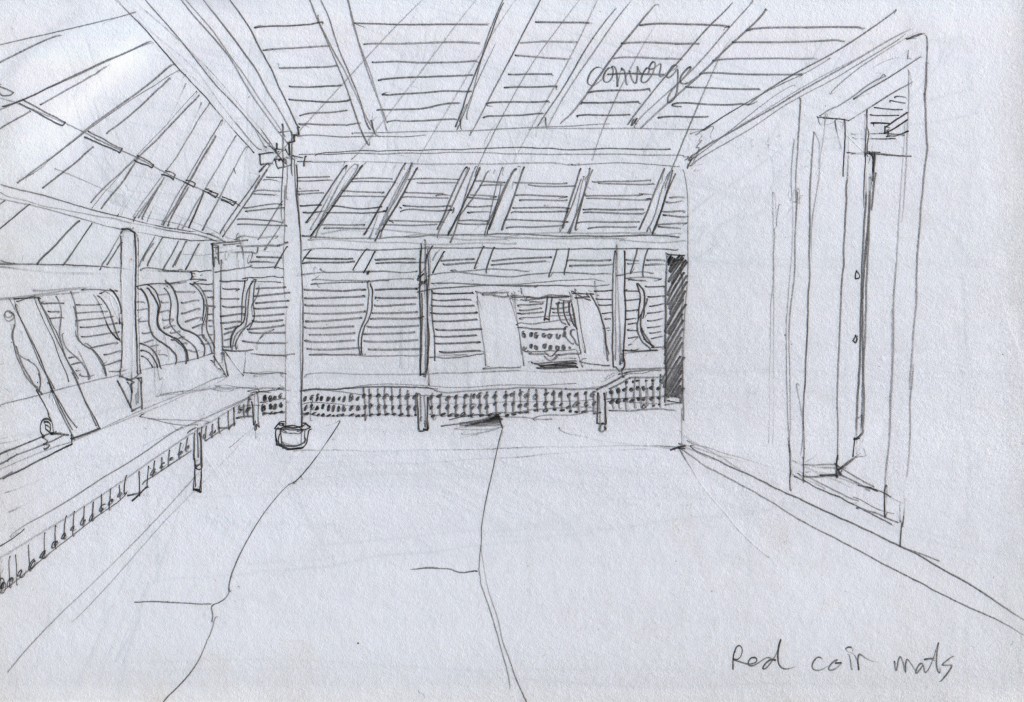
Dance hall at Krishnapuram Palace.
This traditional architecture makes for a most agreeable space.
An upper storey gallery, principally made of wood, surrounds the masonry core of the building. Outward sloping screens made of horizontal lath provide fresh air and diffuse light on all sides.
S-shaped beams support the lath screens, softening the timber frame construction’s otherwise straight lines. The overhanging eaves keep out the intense direct sun.
Thick കയർ (coir, coconut fibre) mats cover the floor.
In this room, called the dance hall, built-in wooden benches extend around the perimeter. Below the benches are flat cut balusters, providing more openings to admit light and air.
A few shuttered windows are installed on the screens, allowing unobstructed views into the courtyards.
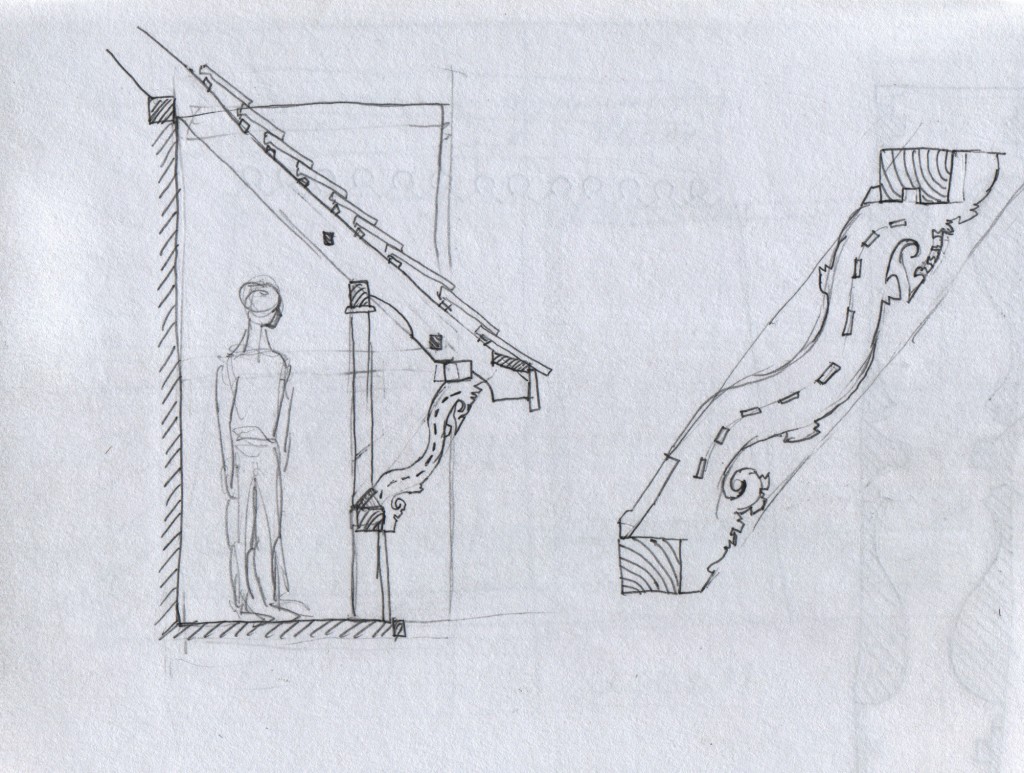
Cross-sectional view of upper-storey woodwork at Krishnapuram Palace.
These wooden galleries surround most of the masonry buildings. The galleries provide airy, bright passages.
The S-shaped timbers that support the lath screen are shaped into stylized dragons. At the gallery’s corners, the carved timbers are more detailed, rendering the dragons in more naturalistic form.
There are variants: in Thiruvananthapuram, Kerala’s capital, the artisans carved the S-curved timbers into horses.
I heard from a couple of people that this architecture shows influences from Chinese architecture. I find this plausible, as Kerala’s ocean-going trade links with other countries go back thousands of years.
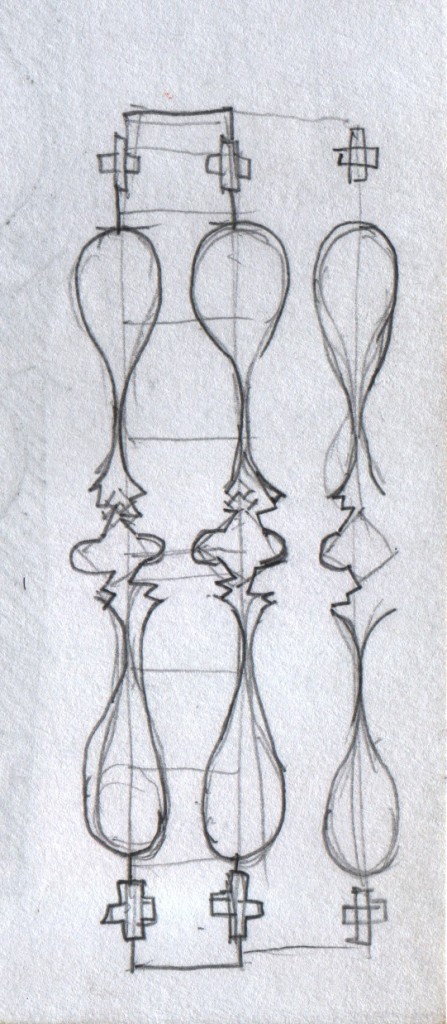
The ventilation beneath the built-in benches in Krishnapuram Palace‘s dance hall. The spaces between the flat balusters provide the openings.
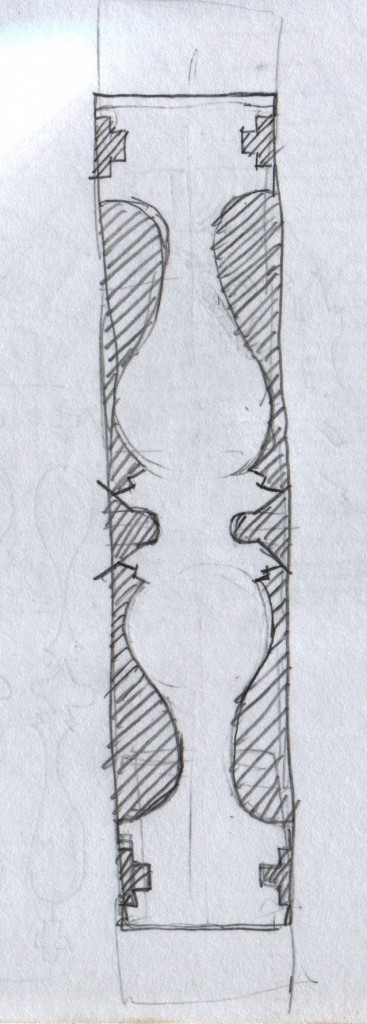
Profile of a single baluster beneath the benches in Krishnapuram Palace‘s dance hall. These balusters run along the exterior wall, providing openings for air and light. The hatched area is the open part.
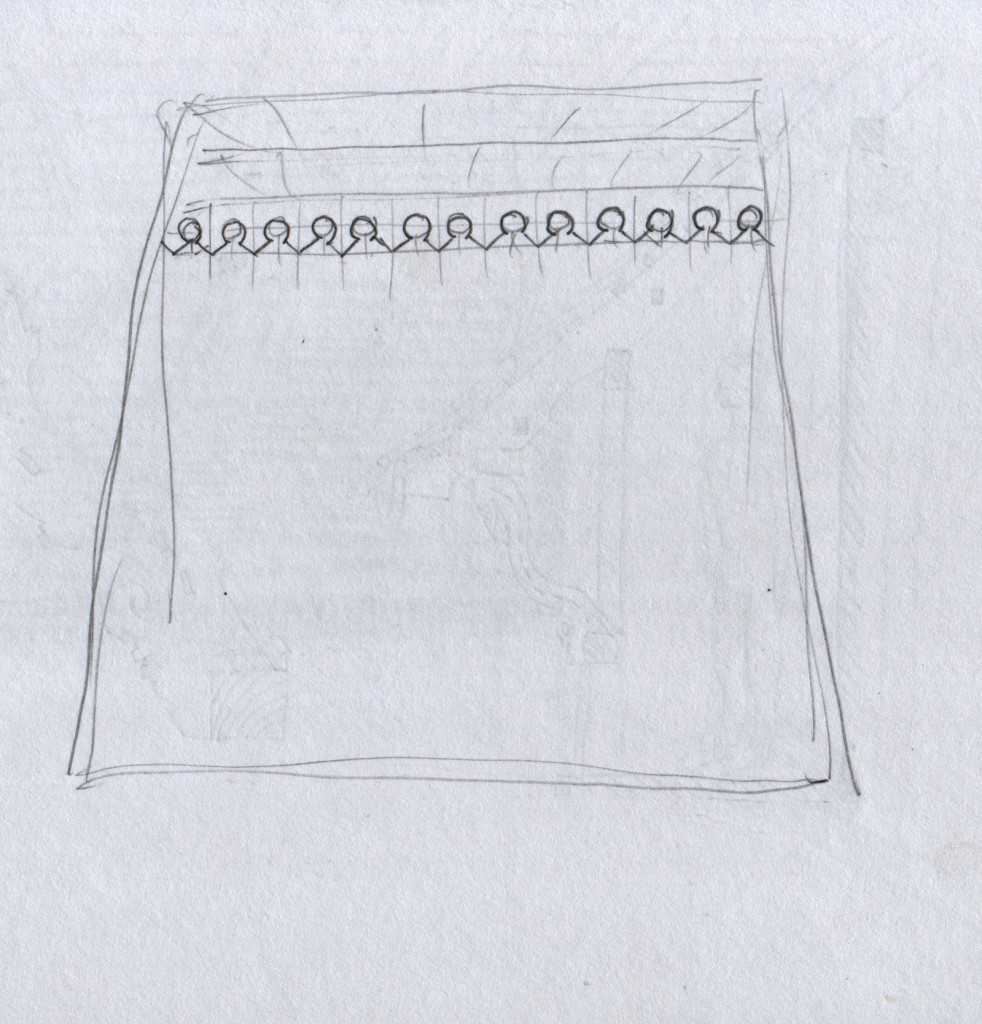
Carved wooden fascia’s decorative edge on the eaves of Krishnapuram Palace, visible through the window.
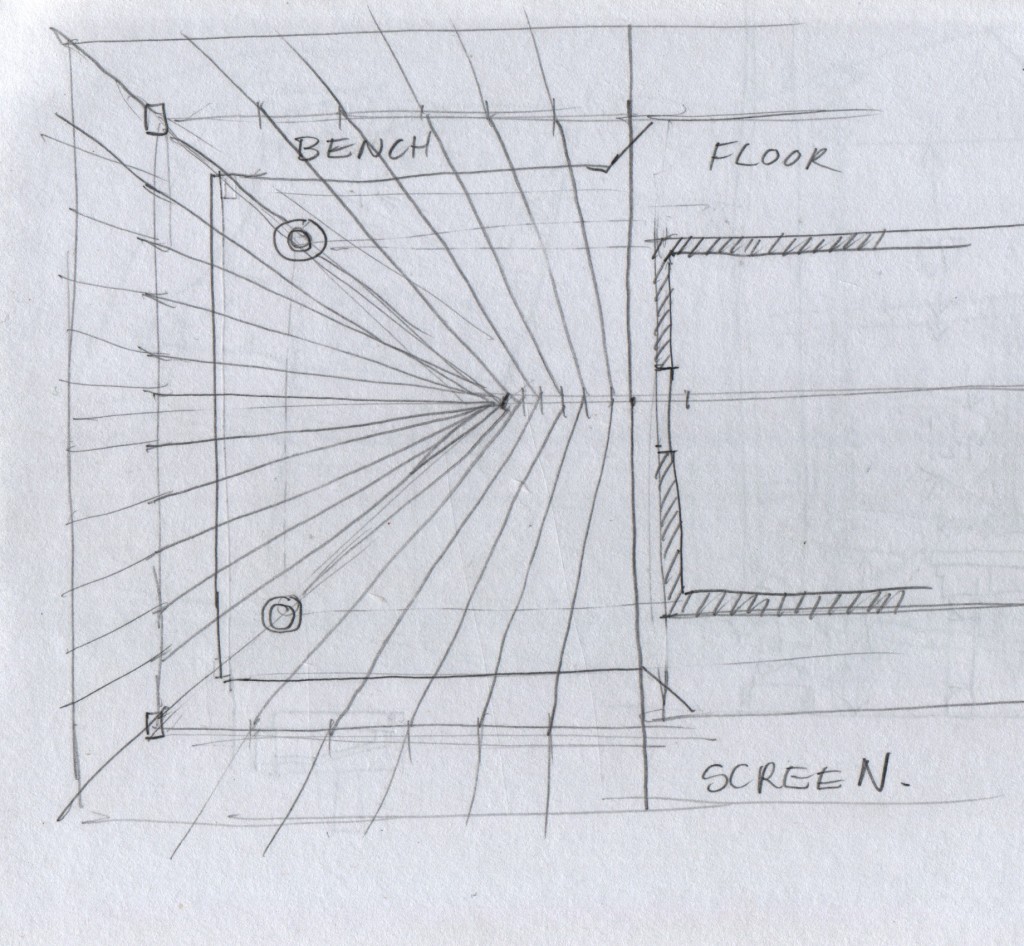
The rafters on the Krishnapuram Palace hip roof fan out in a radial pattern, in contrast to Western framing in which the rafters, except for the two corner hip rafters, are all parallel.
I also observed this fan-shaped rafter arrangement in a building at Padmanabhapuram Palace, Thuckalay.
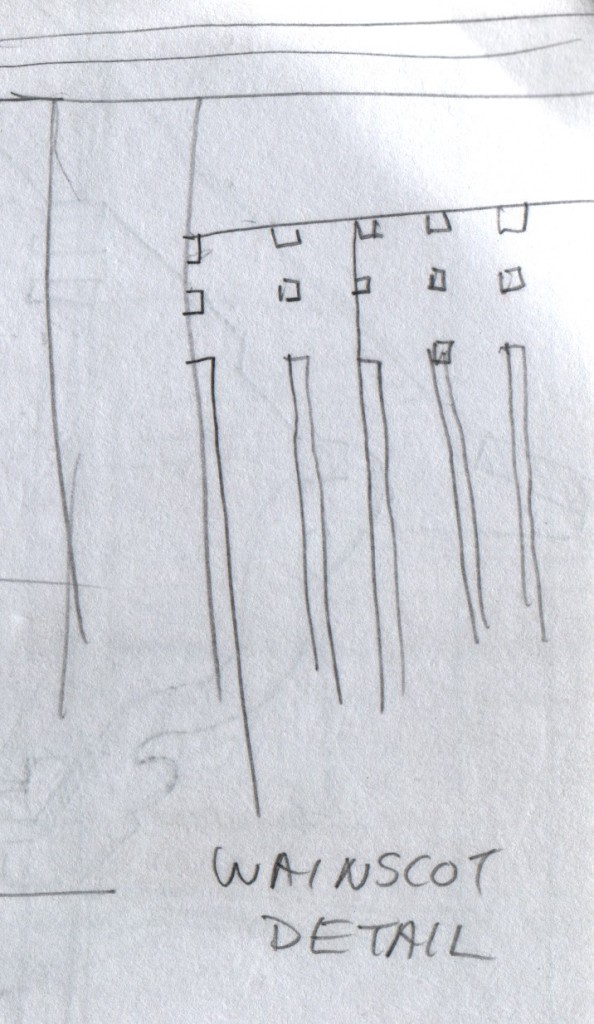
Carved decorations on Krishapuram Palace wainscot. The pattern consists of rectilinear grooves cut into the planks where they abut each other, plus identical grooves across the plank’s face, creating parallel lines. Small square hollows above the grooves provide detailed accents to the pattern.

Cross section of Krishnapuram Palace upper storey woodwork, with some estimated dimensions.
I have learned the inch equivalents of my outstretched hand, my forearm, my thumb’s width, and my standing height, so I can sit in a space like this and roughly estimate its dimensions without pulling out a tape measure.

Through this second-floor window at Krishnapuram Palace, the Queen could view her petitioners, and they could see her.
The palace wall entrance door, with its pitched roof, is visible through the window.

Krishnapuram Palace bed.
This bed is built in to the wall, its head toward a shuttered window in the sloping exterior screen. Long, tapered wooden columns stand at the bed’s four corners.
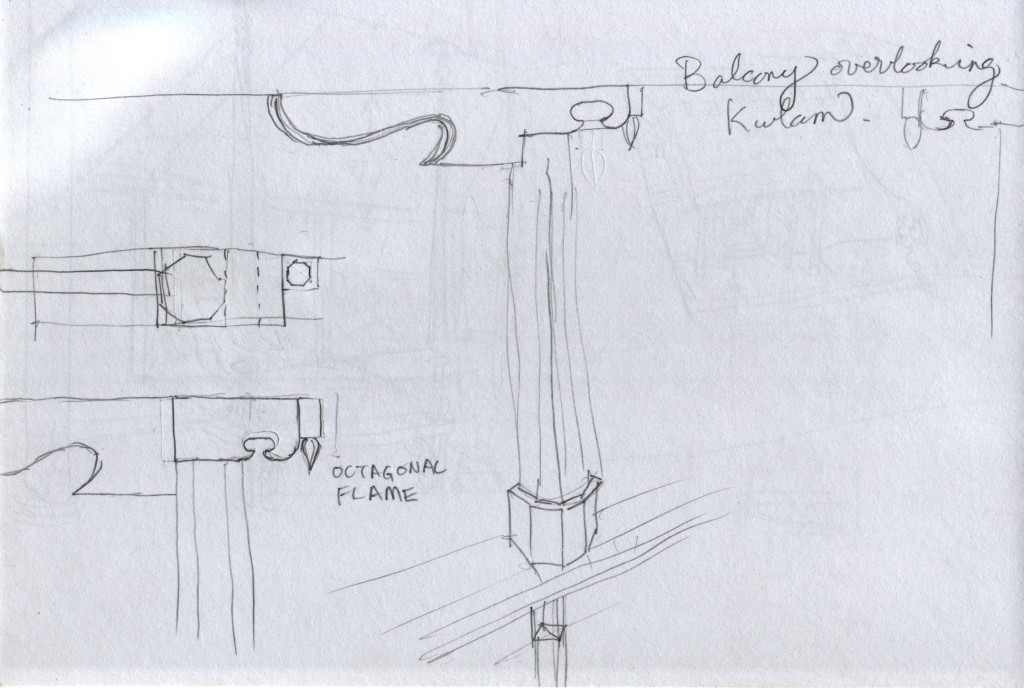
Details of a wooden column on the balcony overlooking Krishnapuram Palace’s pond, or kulam.

Hasty sketch of one of Krishnapuram Palace‘s courtyards.
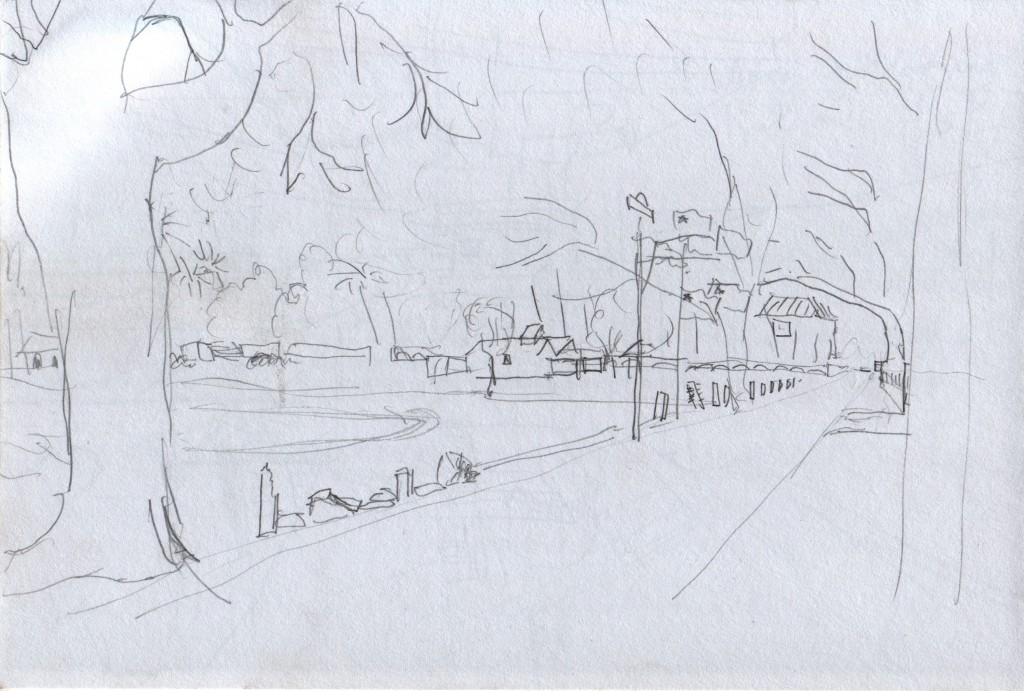
The public sports field, or “ground”, next to Krishnapuram Palace in Kayamkulam.
The trees on the right side extend their great branches across the road and provide shade on the sports field.

This miniature snack shop by the roadside in Kayamkulam has an attached garage for the proprietor’s hand-crank tricycle. I walked past this shop on my way to Krishnapuram Palace.